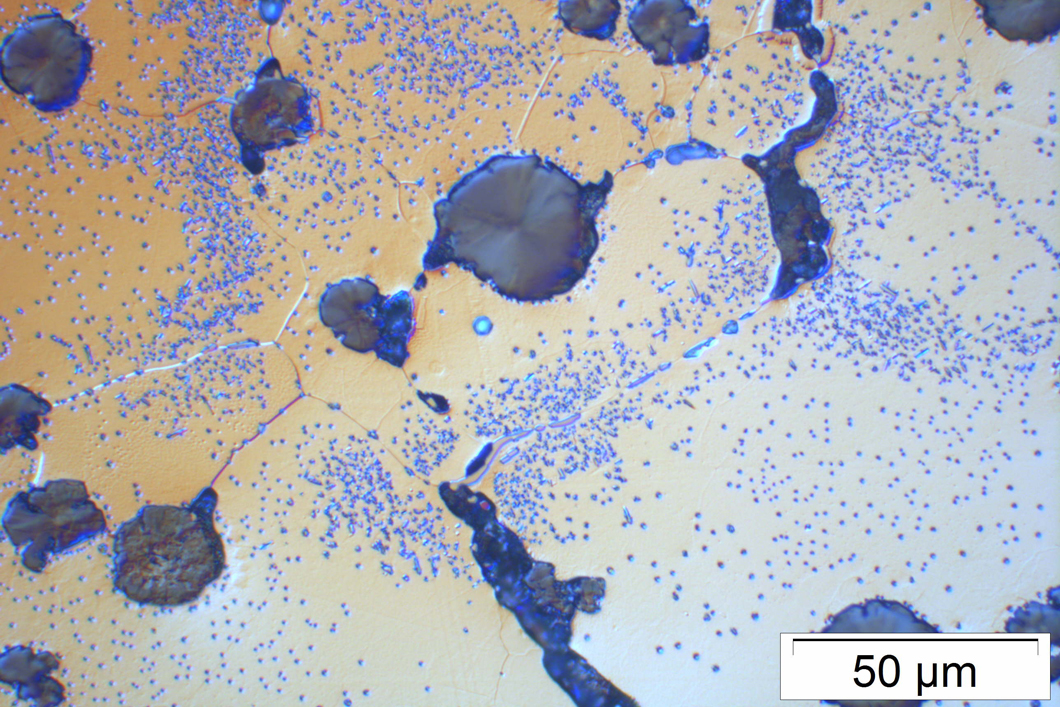
Optical micrograph of a creep specimen (900 °C; stress 15 MPa)) shows the formation of material damage on graphite spheres and grain boundaries
Source: BAM, Division Experimental and Model Based Mechanical Behaviour of Materials
For manufacturers of turbo-machines, reliable and feasible lifetime models are much-needed tools for the identification of weak spots in the component already in the development phase and for a better understanding of damage mechanisms. Moreover, these models allow for an easier assessment of the impact of changes in component geometry or of deviating operating modes. Consequently, the number of cost intensive and time-consuming component tests can be reduced. In addition, efficient design methods resulting from such models allow for a reduction of the number of product development iterations, which is beneficial for a fast product launch on the market.
Material properties for various load cases are required as input for lifetime models. The present paper describes the behavior under thermal and mechanical cyclic loading (thermo-mechanical fatigue - TMF) for a creep-resistant austenitic cast iron with spherical graphite (Ni-Resist) used for exhaust gas turbocharger hot parts. While the thermal load cycles between 400 °C and 700 °C, 800 °C respectively 900°C, the mechanical load can reach its maximum whether at maximum temperature, thus characterizing the load cycle as in-phase or at minimum temperature, characterizing it as out of phase. Additional stationary operating conditions are represented by hold times during the load cycles. Lifetime is defined as the number of load cycles to initiate a macroscopic crack (component lifetime).
The experimental life time of specimens tested under in-phase loading conditions compared to those tested under out of-phase conditions shows only small differences of about the same order as the usual scatter of tests on cast materials. Specimen failure was characterized by crack initiation originating from the oxidized specimen surface as well as crack initiation in the entire volume. For in-phase tests with a maximum temperature of 900 °C continuous cyclic softening was observed from the beginning. Metallographic analysis illustrates that under these testing conditions damage is characterized by intergranular creep damage.


